By Rick VanSickle
You would think making wine at multiple Niagara wineries would be enough for one person, but, no, you would be wrong. Dead wrong.
Enter Kelly Mason: Domaine Queylus winemaker, Honsberger winemaker, The Farm winemaker (from 2015-2020), and now Mason Vineyard winemaker/grower/owner with the launch of her first portfolio of wines. Let’s be perfectly honest here; Mason is on a roll. And come to think of it, she’s in a class that’s shared by few as the winemaker, grower, winery owner, brand developer — and a woman — in a world, sadly, that sees far too few at the top echelons of the wine industry.
There’s no question that Mason’s wines from Queylus, The Farm and Honsberger have earned her a legion of fans. And now her namesake winery and brand from estate and sourced grapes will only expand that fan base.
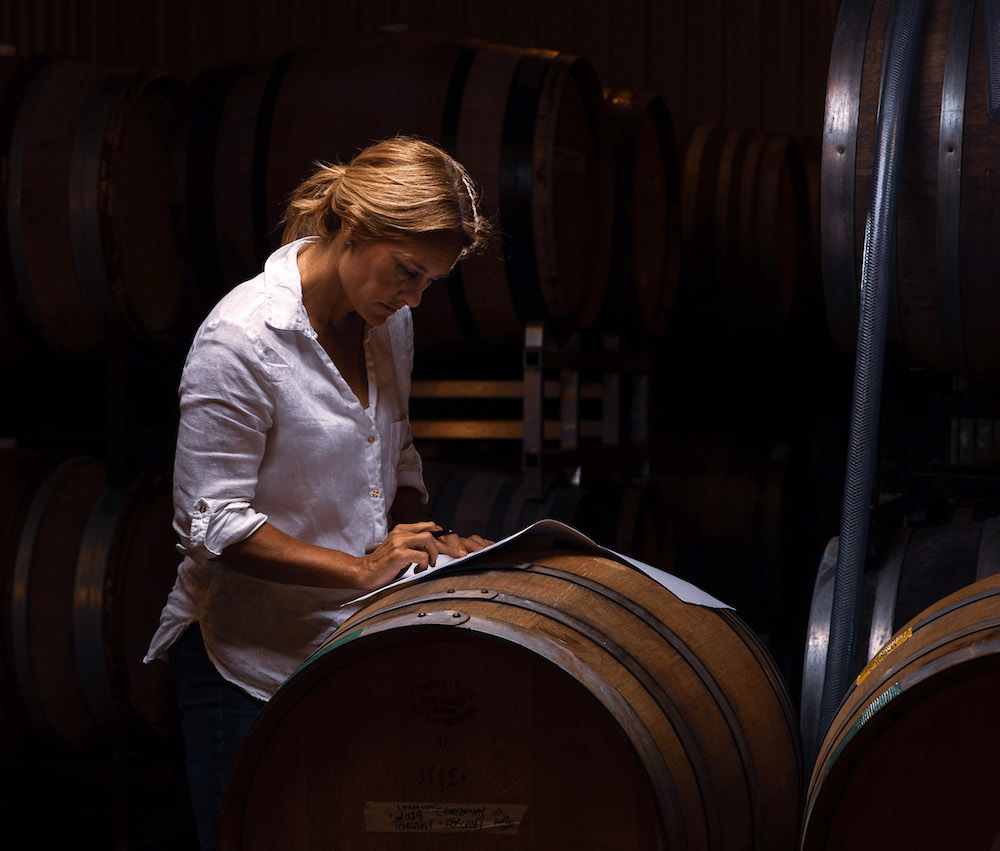
It’s remarkable to think that few even knew Mason, above in her barrel room, was planning her own brand, a long-held dream that began to take shape in 2020. But, as she explains to Wines In Niagara, “When I think of it, really, I have been quietly creating this brand over the past 10 years by owning and working in my vineyard.”
Mason has been growing low-yield Chardonnay, Pinot Noir, and Cabernet Franc grapes for over a decade for several top wineries in the region, including Domaine Queylus and The Farm, which have been met with critical acclaim. The Mason Vineyard, situated on the Twenty Mile Bench with climate and soils ideally suited to the temperament of the three noble varietals she grows, has all the hallmarks of following that trend.
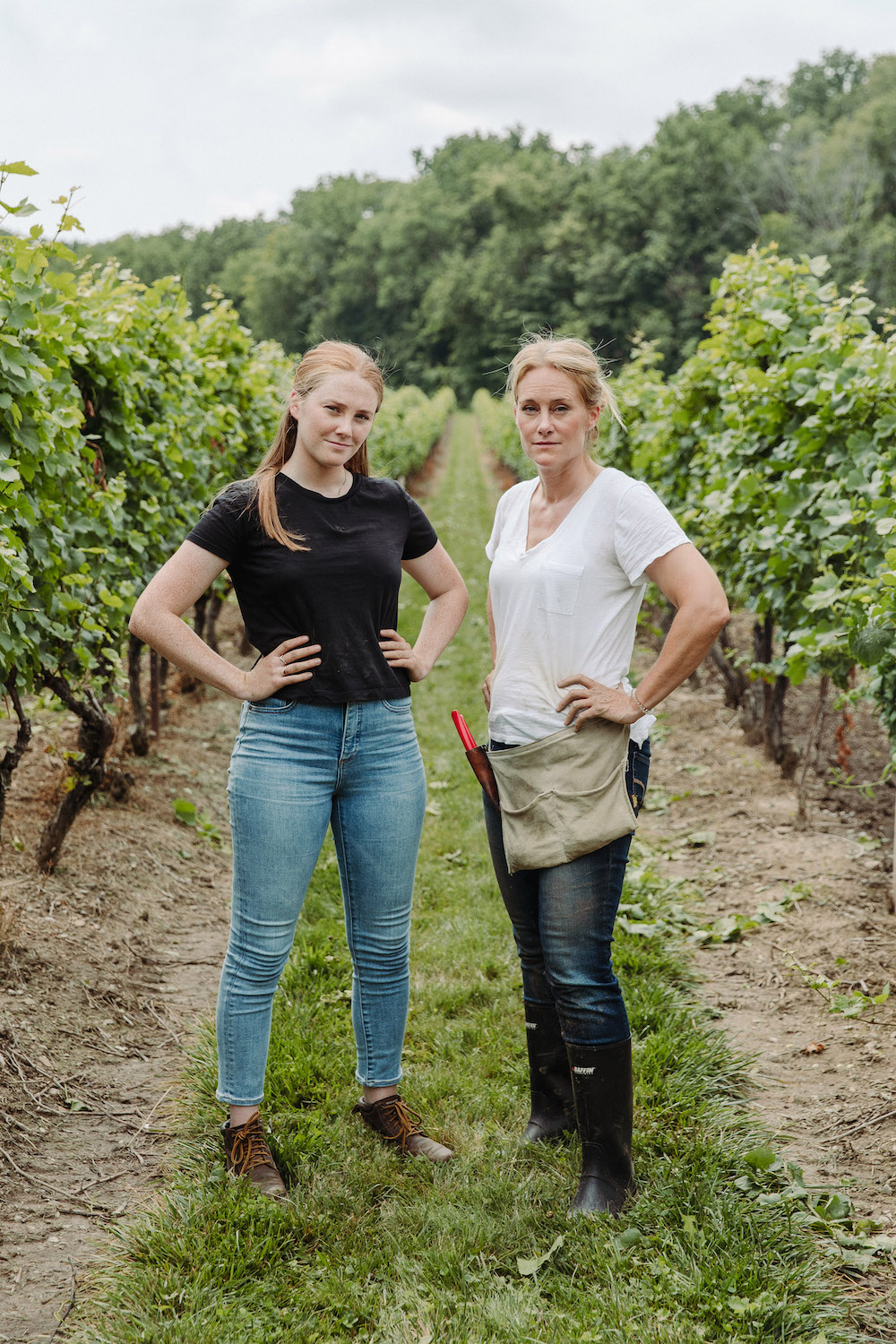
Mason’s first estate wines and “collaboration” wines with assistant winemaker Brooke Husband, above with Mason, from sourced grapes were quietly released late last year and, for the most part, quickly sold out. Mason plans on re-opening the online retail site here this spring.
She has always had a clear vision for Mason Vineyard — to make only extraordinary estate single vineyard, low yield, small batch, minimal intervention Pinot Noir, Chardonnay and Cabernet Franc wines that express the character of the site. The winemaking facility at the farm is focused on making and producing “beautiful and distinct wines — this winery is about us, not about you. Us meaning the wine, and you meaning, well you,” Mason says.
Wines In Niagara tasted a selection of Mason and Collab Series wines over the holidays. We also asked Mason to answer some burning questions we had about Mason Vineyard.
First, the Q&A …
Three burning questions for Mason
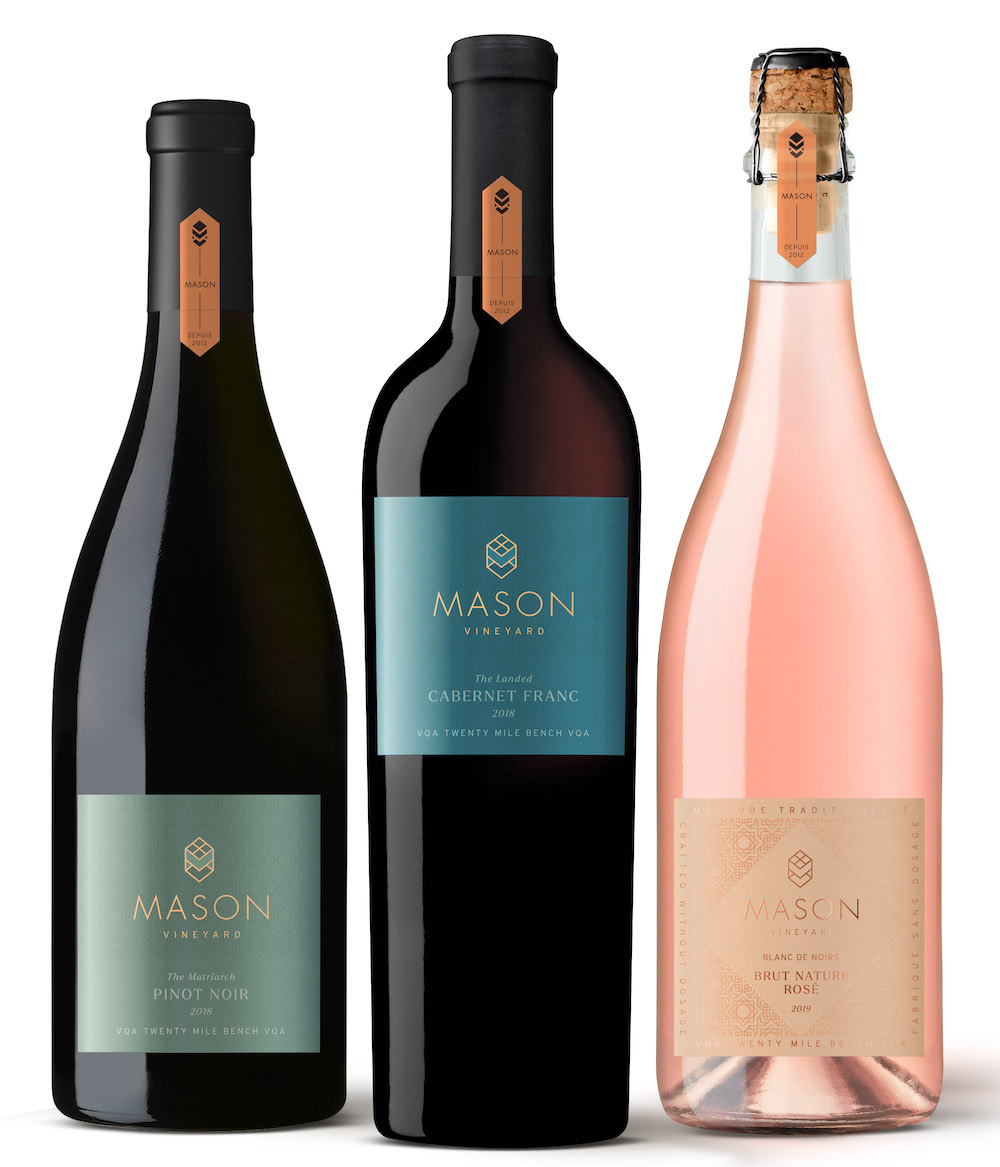
Wines In Niagara: Here’s the biggest question I have. How the hell did you go about quietly creating a brand, a winery, a project all yours from your own grapes while making wine at three key wineries in Niagara and barely no one even knowing you were doing it? How is that even possible?
Kelly Mason: The dream was always to have my own wine. I made the decision in the summer of 2020 to start developing my brand, my label, and my winemaking vision. When I think of it, really, I have been quietly creating this brand over the past 10 years by owning and working in my vineyard. Caring for the vines and following each season gave me the chance to learn a lot about each vine and its ‘personality.’ Most mornings, you can find me out there working, or walking the rows. I have also had time to gain experience throughout the past 10 years as a winemaker by working on many different projects with many wonderful winemakers. These opportunities helped me create processes, small, dedicated teams, and relationships with amazing wineries. It has always been exciting! Due to the scale of my production for Mason Vineyard (only the size of my existing vineyard), I determined that the first launch should be more low key and personal to allow me to connect with each interested person. I think that I felt ready with respect to my vineyard and that it was the right time in my winemaking path to push myself to the next level of that original dream of mine.
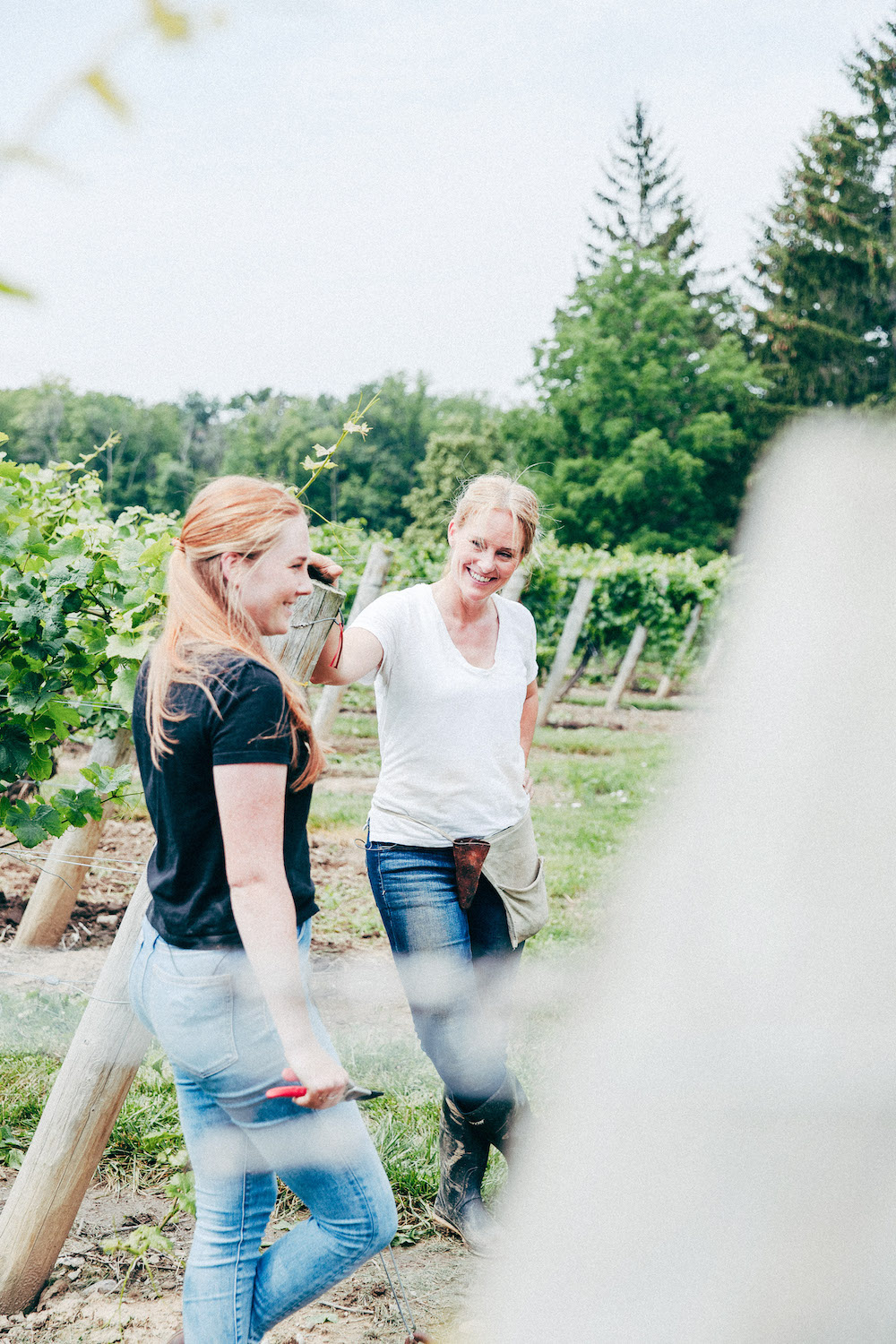
WIN: It would seem to me that making the Collab Series of wines with your assistant winemaker Brooke Husband, above with Mason, was of crucial importance to you and Husband. How did the collaboration come together and where do you take from here?
Mason: Making the first two Collab wines with Brooke was a lot of fun — it was a chance to make all the decisions on the winemaking style together. It was a no brainer to choose Brooke. I wanted us to share the credit for the wine and have her name on a label. The goal of the Collab label is a learning opportunity: new vineyards, new winemaking techniques, and sharing new ideas on the industry as a whole. Even though Brooke and I work together on other projects, sometimes those projects might have set parameters. With the Collab Series Rosé and the Viognier, we tried different pressing ideas, skin contact, filtration ideas etc …
When establishing the vision and goals for Mason Vineyard, collaboration was a key element to be sewn in from the start. Consequently, this series is about sharing and connecting with other winemakers and working with grapes from different appellations to collaborate on wine styles.
As for the future of the Collab Series, I would like to take it as far as possible — each vintage I would love to bring in not only more local winemakers or wine industry talent, but also international. Like Josh Jensen (famed founder of Calera Winery)? Yeah, I know that’s big, (and he’s retired), but how cool would it be to make Pinot with him?
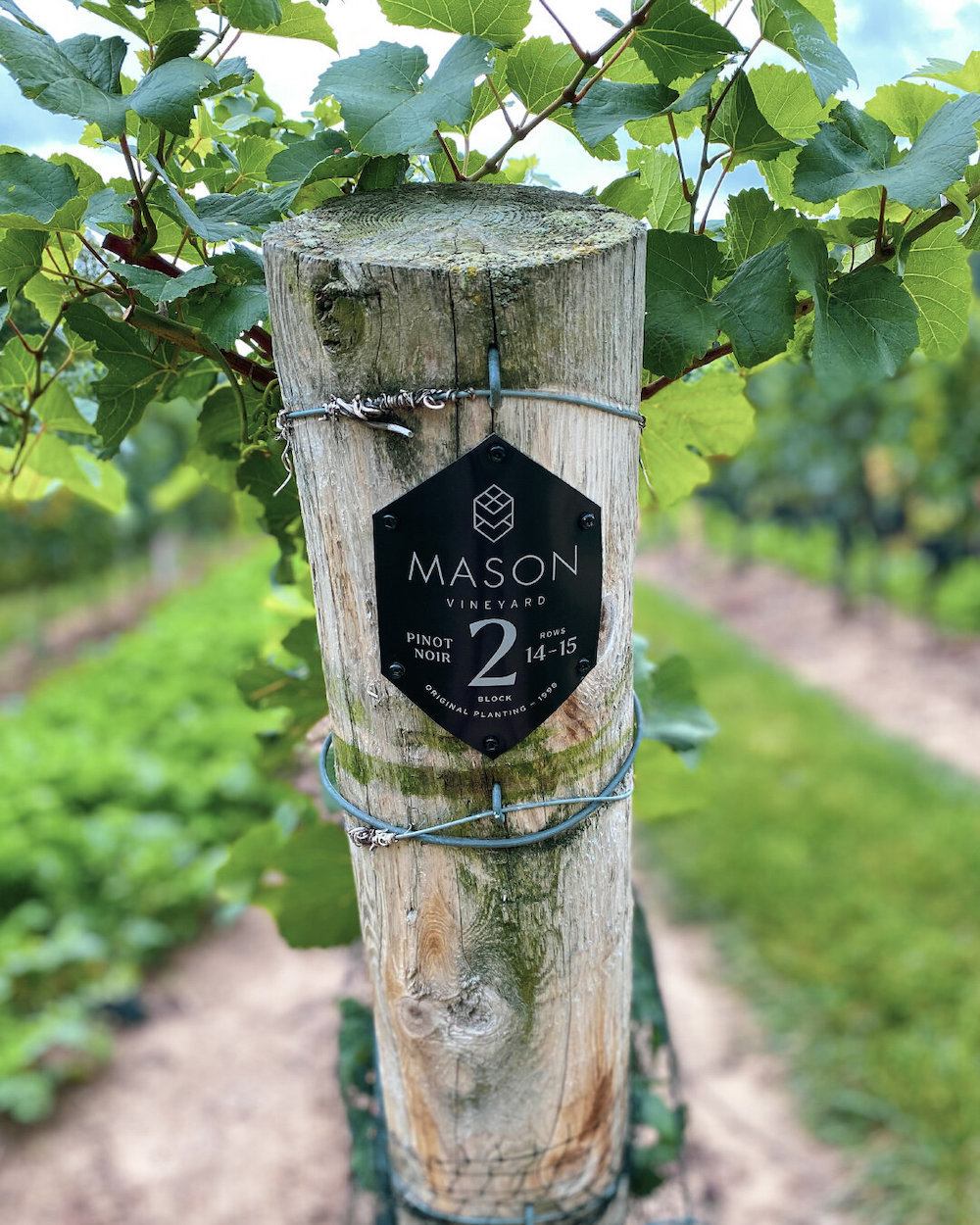
WIN: If there is a theme in your first wines, it is a respect for the vineyard, low intervention winemaking, super dry wines across the board and wines with soul, rather than style. Do I have that right? Is this your goal?
Mason: Yes, I could not have said it better myself — I like that you used the word soul. My vision for Mason Vineyard is winemaking focused — i.e., don’t do anything … that is not essential to the wine. I am learning about my site with each vintage and these old vines are producing a style of Pinot Noir and Cabernet Franc that I love. I don’t have to do much — except be fastidious, passionate, purposeful, bullish, and of course, continue learning. That’s what it takes to make soulful wines. I have to trust in my site, my experience, and my intuition.
If I could add one thing here, when the wines did launch, I was really touched by the response and comments from people — I felt like they were getting what I was trying to do. I am excited to keep winemaking from this site for all our enjoyment.
Mason Collab Series Wines
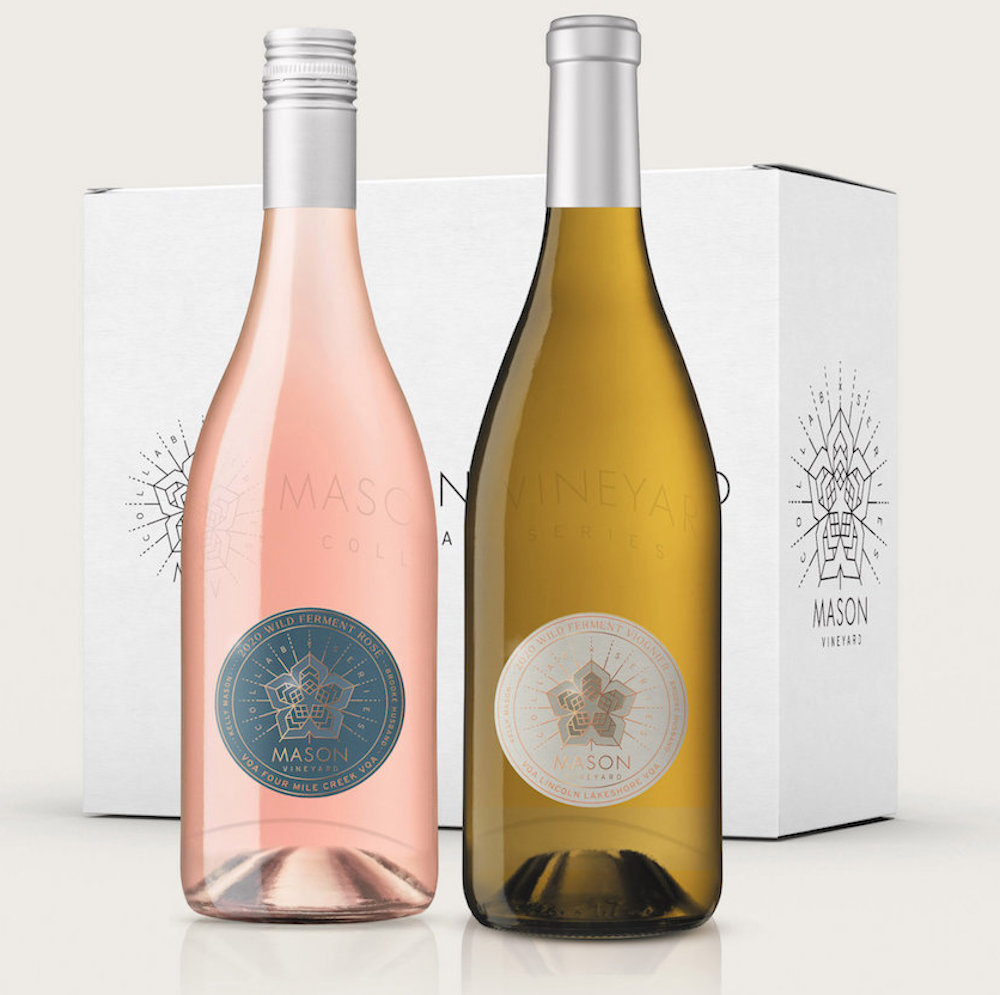
Part of the mission at Mason Vineyard, says Mason, is to collaboratively support peer winemakers, both new and established, because this “strengthens the Niagara region and each other. “When two winemakers work together to make one wine, they share knowledge and inspiration resulting in exciting new approaches and discoveries. And it’s also fun.
“These collaborations are part of our soul and a vent for the creative energy that tends to build up while undertaking the arduous tasks that are a part of the everyday life around a hand-managed vineyard. They’re an opportunity to stay challenged, try new techniques and share the frustration, exhaustion, and exhilaration that it takes to get a wine to bottle. The collaborations don’t have a schedule, nor do they all come to fruition. This means that when they end up allocated here, they are truly special and worthy of getting to know.”
One of the cool things about this Collab Series, says Mason, is that the wines are created from grapes sourced from other vineyards and the production, tanking and cellaring is at other wineries. It’s within these variables that so much of the experimentation and creativity is put into play. “These wines are stories of the vintage, expressions of the personality of each specific site, as well as the people that we collaborate with.”
Collab winemaker Brooke Husband
“Brooke and I have worked together for three years; Brooke is the assistant winemaker and as she likes to say, it’s a fancy title for following me around to every project I work on. Her job is definitely a lot harder than just following! She helps keep us on track, asks tough questions, finds solutions, and makes sure the job gets done,” says Mason.
Husband and Mason began working together in 2017 when Husband did her first harvest at Domaine Queylus for her college practicum with the Niagara College Winery and Viticulture Program. She then went on to live in a 14-foot trailer in the Okanagan while interning at Black Hills Estate. “Her focus and passion is making wild fermented Pinot Noir, so I was lucky to be able to get her back for the 2019 harvest and we have not stopped since! In 2021, it was her fifth harvest.”
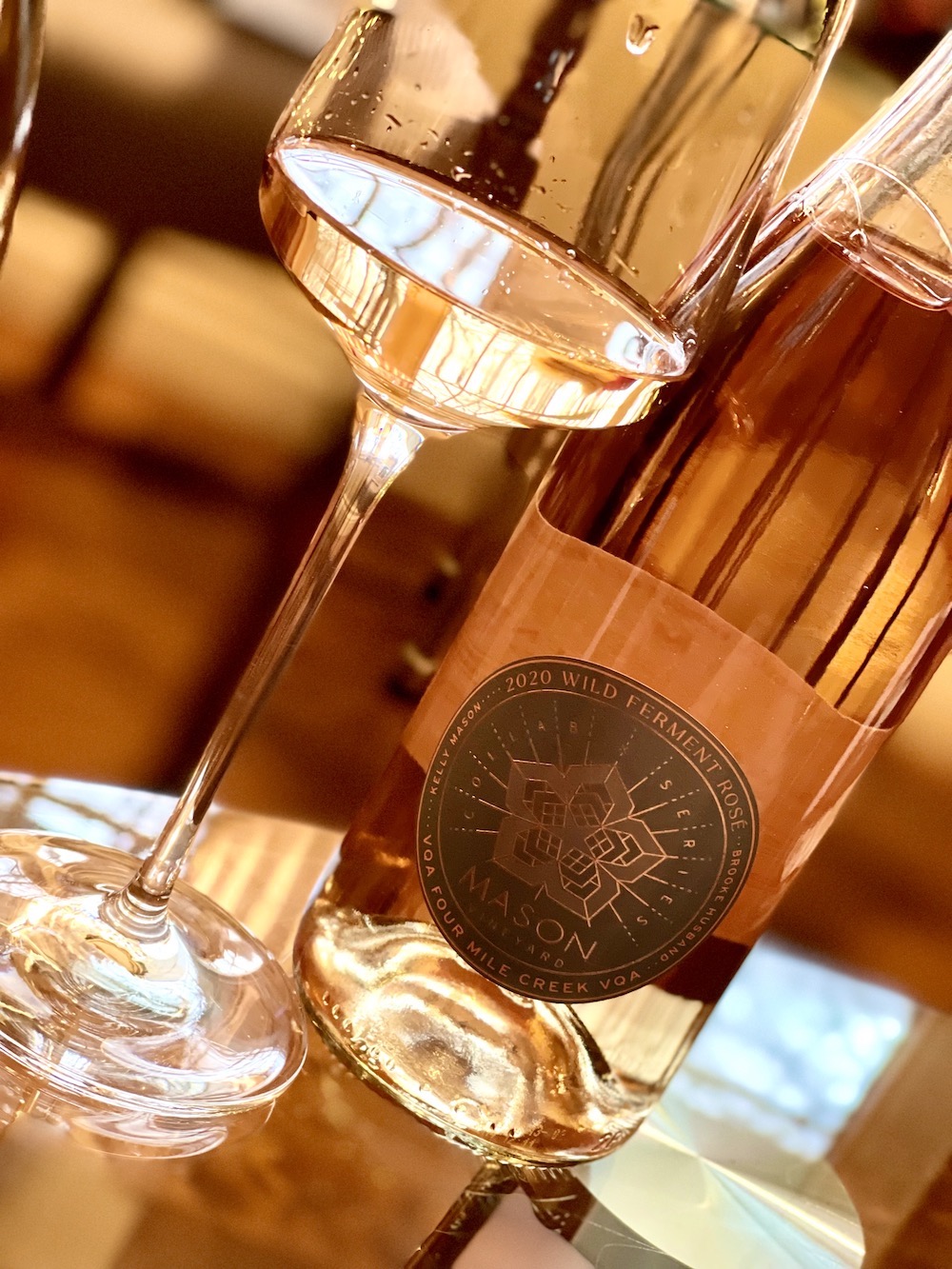
Mason Vineyard Wild Ferment Rosé 2020 ($20, 90 points) — This 100% Gamay rosé is sourced from the Willms Vineyards in the Four Mile Creek. The Gamay was whole berry pressed at low pressure then the juice was moved to a tank that was lined with whole cluster Gamay. Primary and secondary fermentation were wild and the whole clusters were kept in until the end of ferment. It shows a pretty salmon colour in the glass with a nose of strawberry shortcake, black cherries, herbs, brambly raspberries and subtle citrus zest. It’s lip-smackingly fresh and dry on the palate with a rich texture, ripe red berries, savoury herbs, a touch of earthiness and vibrant through the juicy finish.
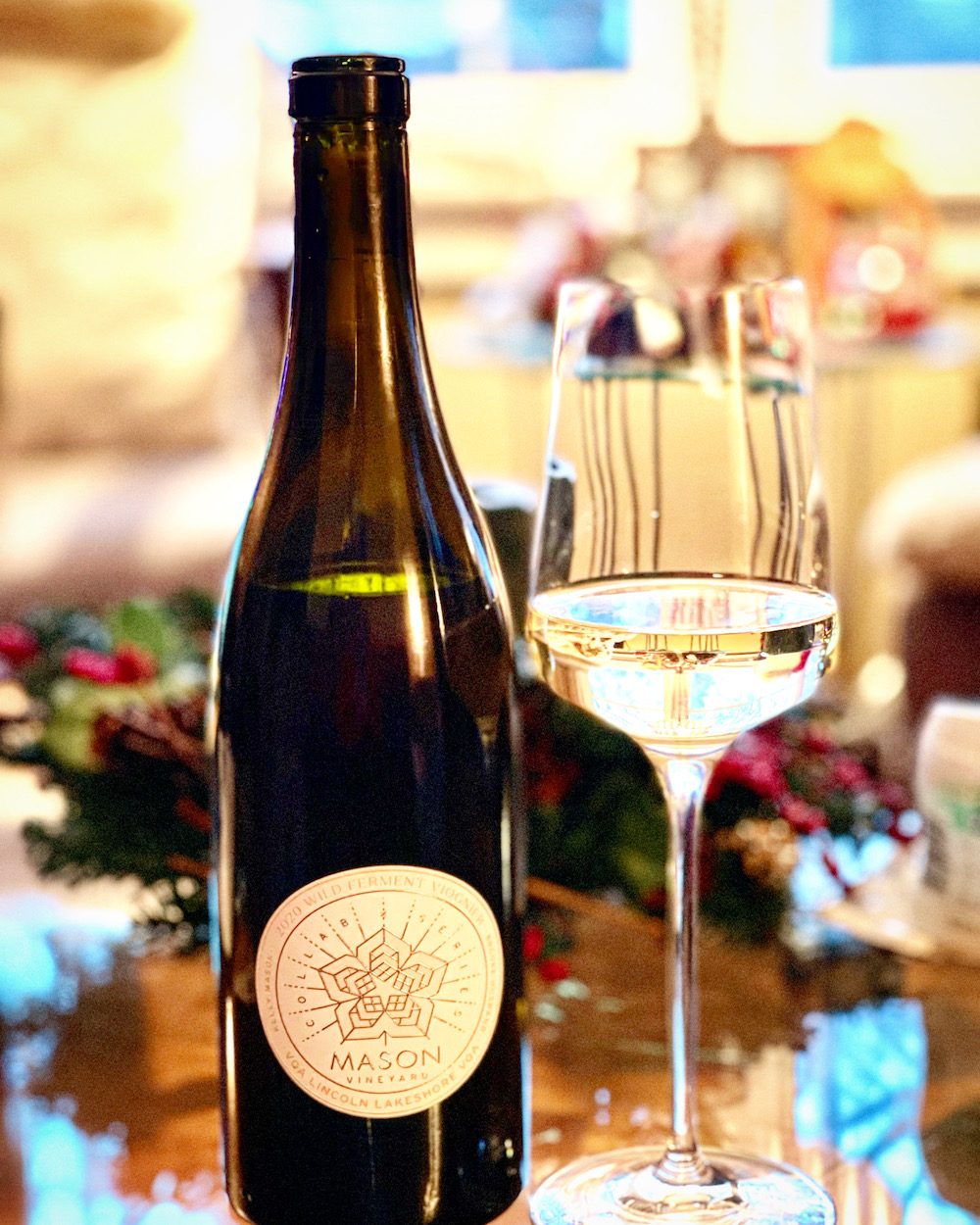
Mason Vineyard Wild Ferment Viognier 2020 ($27, 91 points) — The Viognier for this second wine in the “Collab Series” is sourced from the Grimsby Hillside Vineyard in the Lincoln Lakeshore sub-appellation. This vineyard is one of the oldest in Niagara — the first harvest of grapes from the site was in 1874. The vineyard is 90-acres and is mainly planted to Cabernet Franc, Chardonnay, Pinot Gris, Riesling, and Pinot Noir. The soil is predominantly clay and silty clay/loam over calcareous red clay subsoils. The vineyard is farmed without reliance on chemical herbicides and adopts other sustainable land stewardship practices including undertaking biodiversity plantings and habitat restoration. As Mason explains, “We have never made Viognier before. We like drinking it and thought this was a great opportunity to make a small batch and try something new. Friends and family came out to help us pick the grapes and help with the hand sort. We fermented in stainless for the first half of primary fermentation and in neutral oak for the second half. To go along with our ‘hands on winemaking approach’ we decided to hand bottle all 370 bottles. Why you ask? Because we are suckers for punishment. And to further our learning in making Viognier we’ve decided to hold back one more barrel to see how a year of aging fairs on the wine. So, look out for Part 2, which should be released sometime in 2022.” The Vio was wild fermented and aged in a combination of stainless steel and neutral French oak. It is finished with the highest amount of residual sugar — 2.5 g/l — in the portfolio, which is still super dry. It’s highly aromatic with profound apricot, honeydew melon, ripe peach, white flowers, ginger, grapefruit and apple. It has a fleshy/oily texture and an enticing broth of exotic tropical fruits, apricot tart, a ginger/nutmeg/spice thing going on, with depth, complexity that all lead to a luxurious and juicy finish. I, for one, am looking forward to Part 2 of this delicious wine.
Mason estate wines
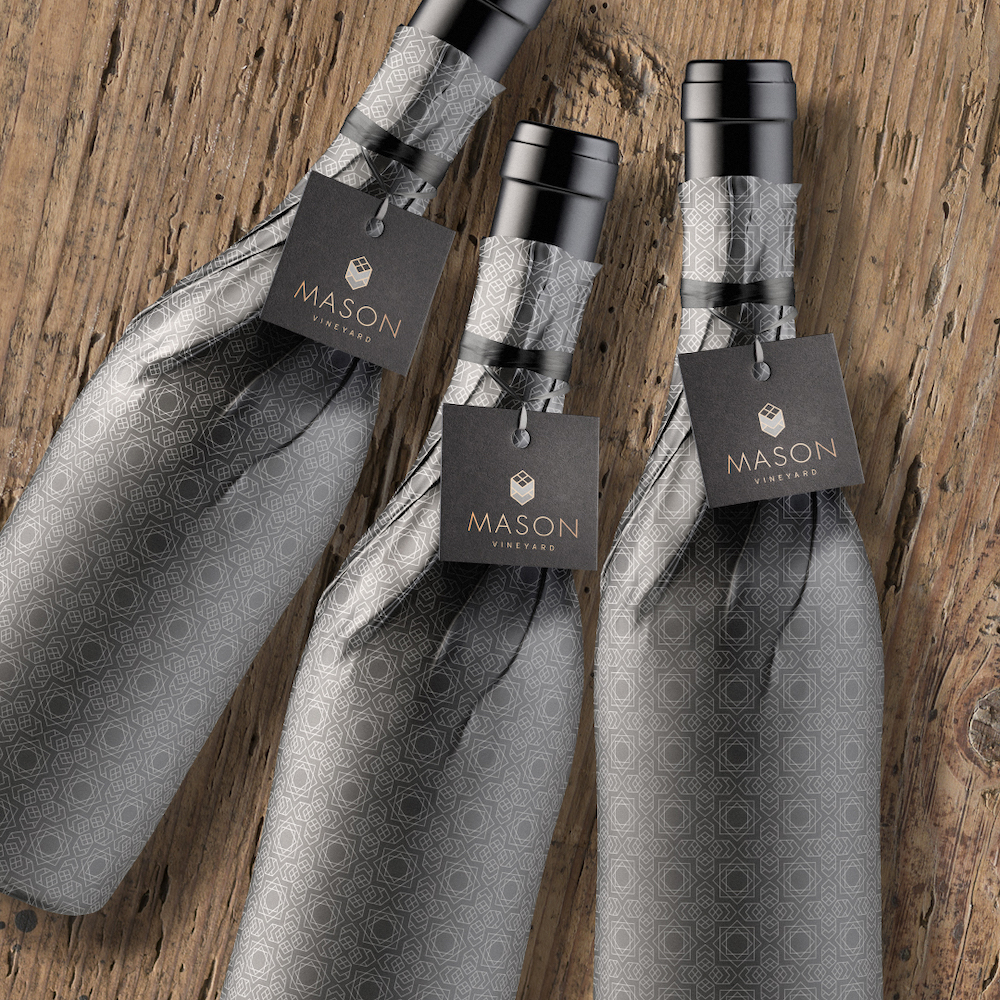
“The Mason Vineyard Estate wines are from my personal vineyard,” says Mason. “They represent the answer to my question — what would happen if I could make all the decisions and bottle what I think is best off of this site? In the early days, I made partial decisions and only took care of parts of the process — sometimes the growing only, other times the growing and the winemaking. These small lots are crafted from thousands of decisions that I made in the vineyard, in the cellar and when I could not sleep at night. I hope you enjoy the attention that was given to the wine in your glass. Creating it was rewarding and fun.”
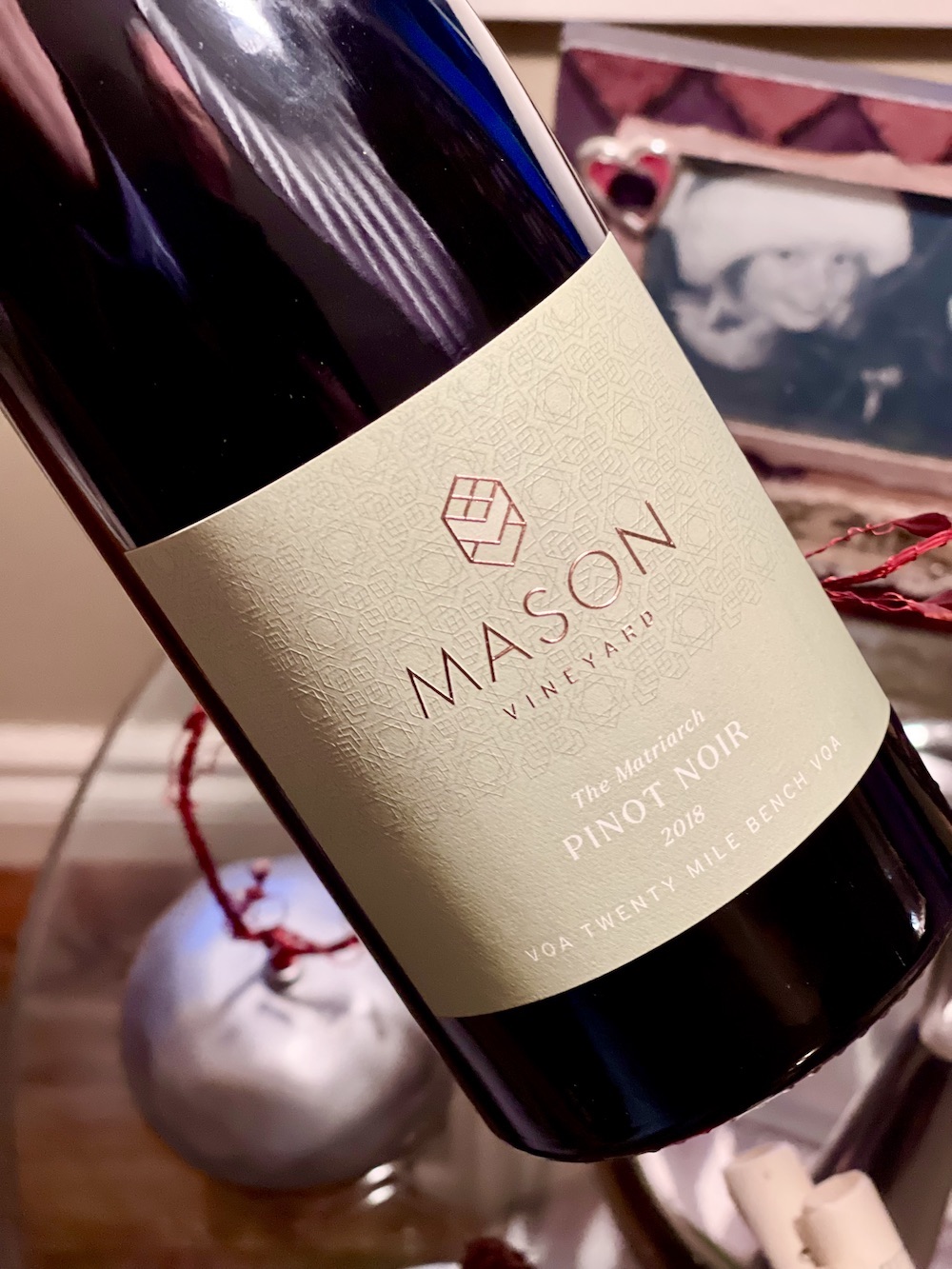
Mason Vineyard The Matriarch Pinot Noir Unfiltered 2018 ($47, 92 points) — This estate Pinot spent three years in predominantly neutral French oak. I love that there is a QR code on the back label (all label designs by Insite Design on Niagara) of the Mason wines so consumers can get a closer look at what they are drinking. This Pinot has a minerally driven nose of cherry licorice, forest berries, savoury spice notes, brambly raspberries, earthy accents and subtle black fruits. The tannins are integrated but add structure to this fine, luxurious Pinot that shows a riper profile on the palate with red and dark berries, woodsy/earthy notes, beetroot, savoury spices and a tangy, lifted finish. Would like to see this after 5+ years in the cellar.
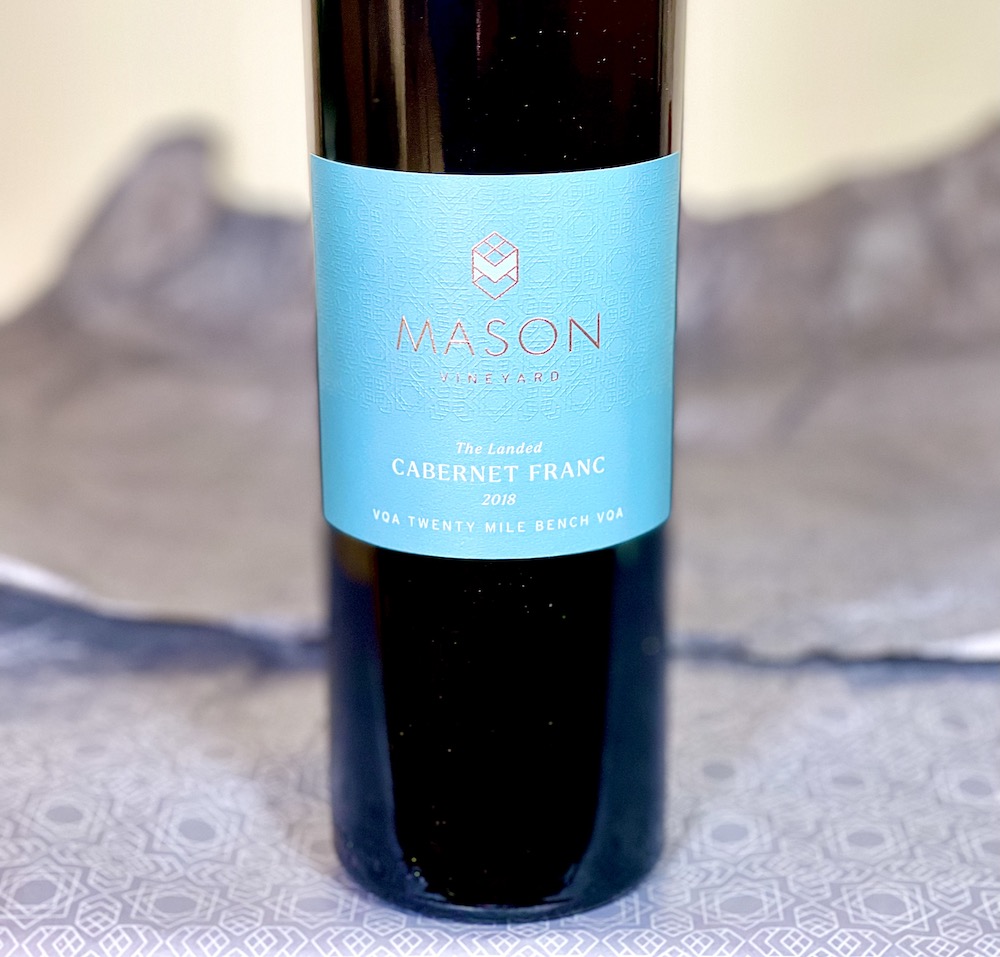
Mason Vineyard The Landed Cabernet Franc Unfiltered 2018 ($47, 93 points) — Cabernet Franc gets my early vote for the superstar wine of the new Mason Vineyard lineup. There is rugged beauty in this first offering with a penetrating nose of crushed brambly raspberries, black cherries, wild Muskoka blueberries, mulled herbs, dried tobacco and integrated spice notes. There is complexity and depth in this lovely CF with a cherry/raspberry melange, elderberries, thyme and some blueberry/cassis notes all carried on a bed of smooth tannins culminating in a long and lifted finish. Good aging potential here.
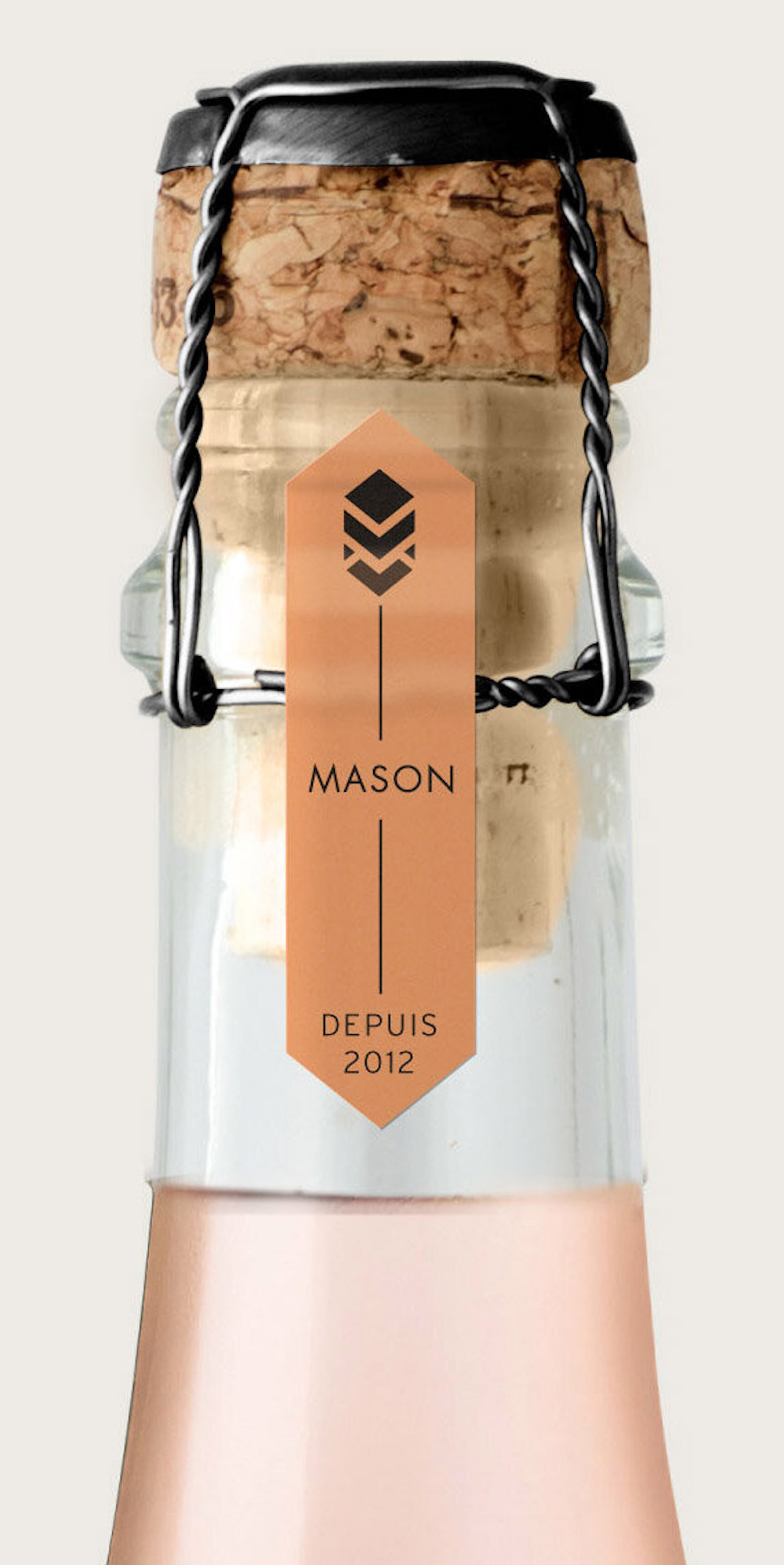
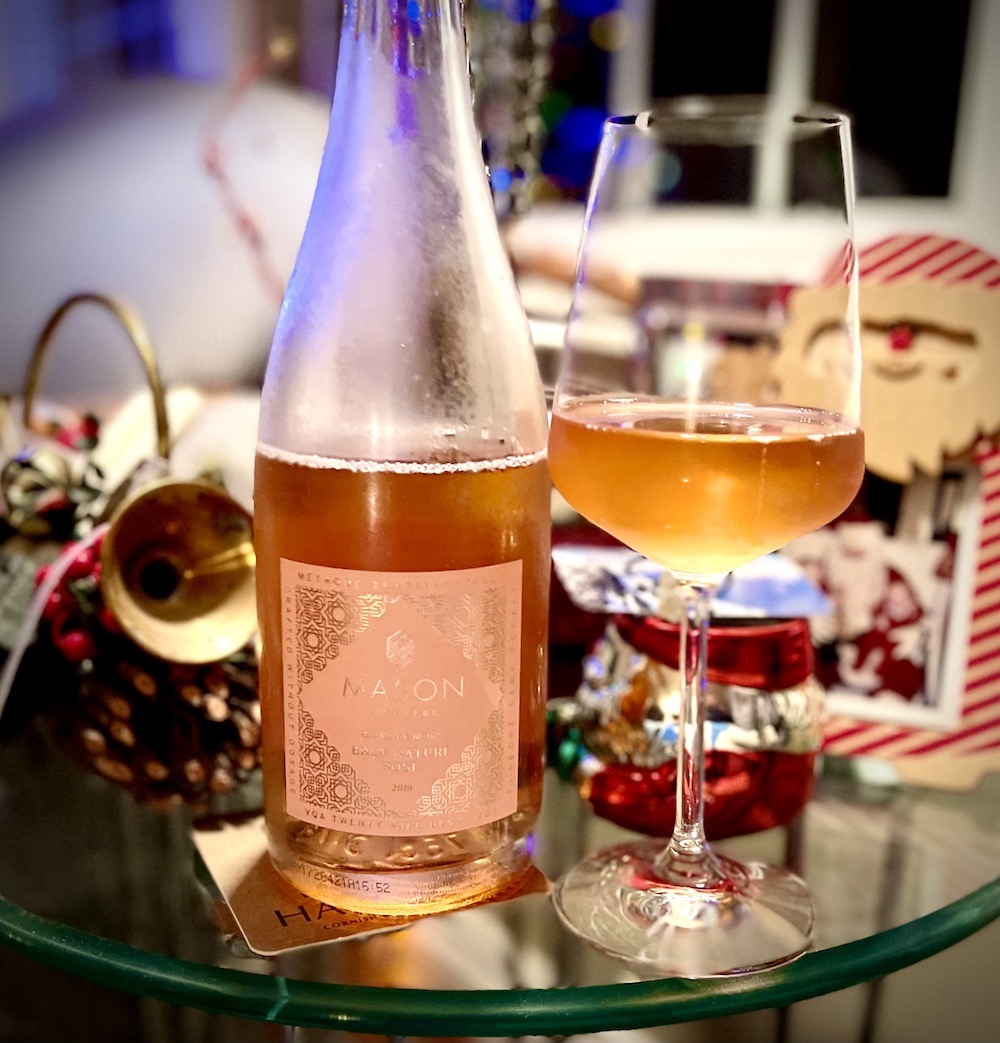
Mason Vineyard Brut Nature Rosé Blanc de Noirs 2019 ($47, 93 points) — This 100% Pinot Noir Méthode Traditionnelle shows a vibrant pale copper colour in the glass with an elegant, persistent bead in the glass. It’s fresh and breezy on the nose, like a whiff of salty sea air, a basket for fresh-picked red berries, red currants, herbs and leesy/biscuit notes. It’s beautifully dry (0.5 g/L) and austere on the palate, with tiny, delicate bubbles, tart raspberry/cherry notes, rhubarb, fresh herbs, a subtle earthy/savoury note and a bright, lifted finish. Another candidate for the cellar to see if it gains any fat over time.


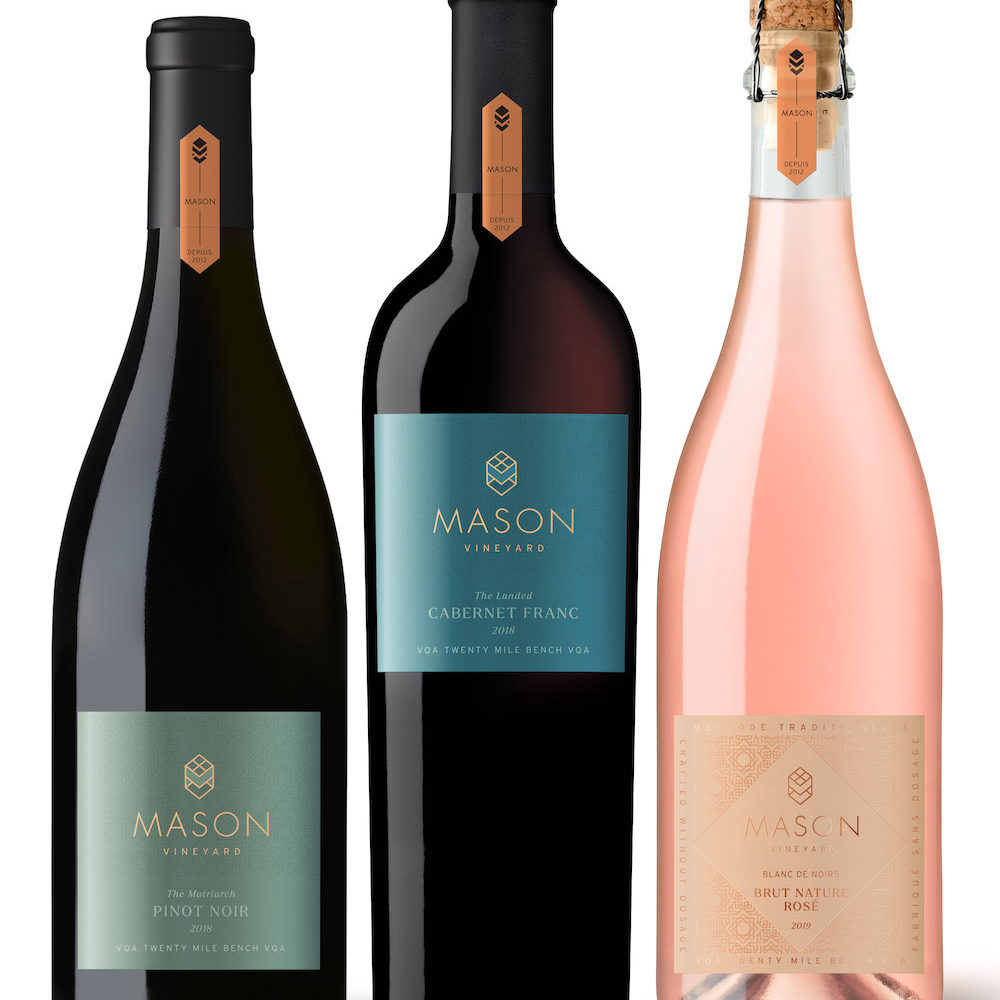




Comment here